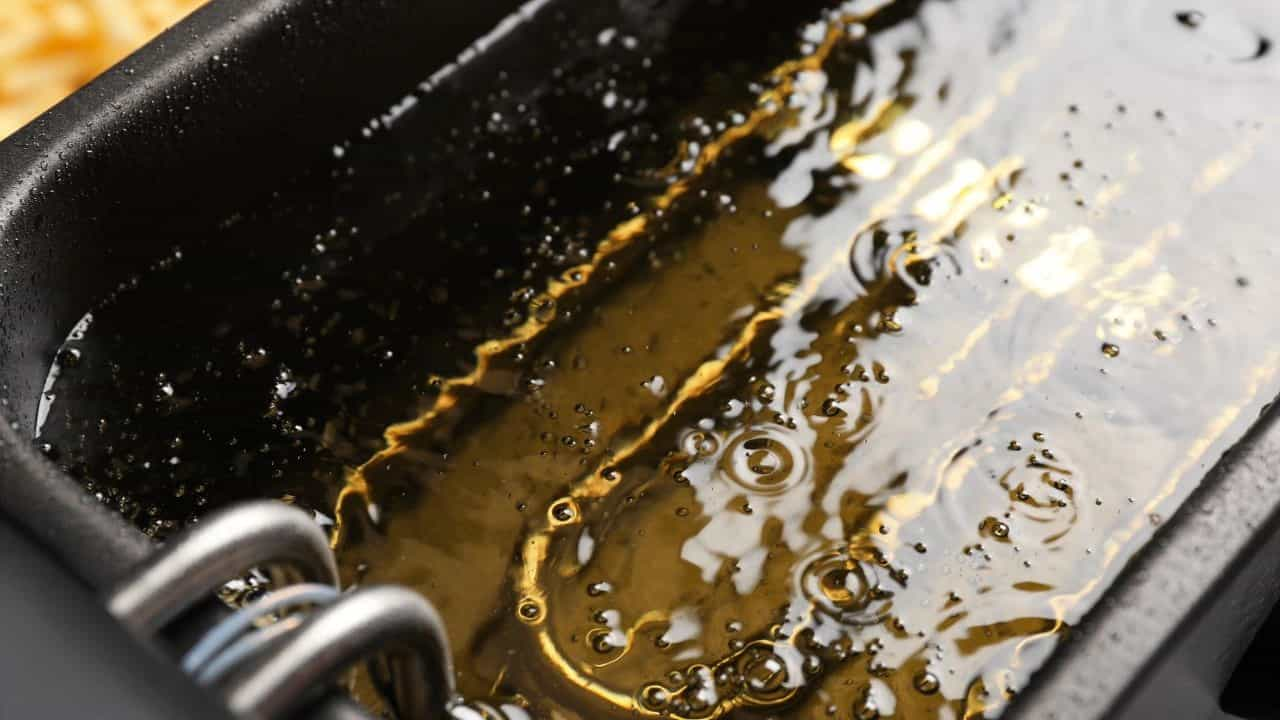A truly great dish starts with great oil. Over the years, I’ve learned that even the finest frying oil can betray you if you’re not paying attention. In my kitchen, I’ve seen firsthand how a rancid smell, cloudy appearance, dark residue, or even a subtle off-flavor can signal that your oil has had its day. In the upcoming sections, I’ll share all my insider tips—from spotting the smoke point to assessing color changes and testing with food droppings—to help you catch these signs early. Stick with me, and you’ll learn how to keep your fryer—and your flavors—in peak condition every time you cook.
- Spot the Smoke Point
Spotting the smoke point of your frying oil is straightforward. Look for smoke, quite simply. Save Fry Oil how to tell if frying oil is bad offers guidance and advice on this issue.
The appearance of smoke signals it’s time to change or discard the oil. It should not be ignored. Continuing to cook with overheated oil compromises taste.
It also leads to potentially harmful compounds forming in foods. Heating oils beyond their smoking points doesn’t just affect flavor; it affects health too, by creating unwanted chemical reactions in fats that can lead you into unhealthy territory. Noticeably smoky kitchens might illustrate an exceeded smoke point at play – a clear sign for concern.
ZeroAcre Farms contributes vital insight regarding oils’ various properties].
- Assessing Oil Color Changes
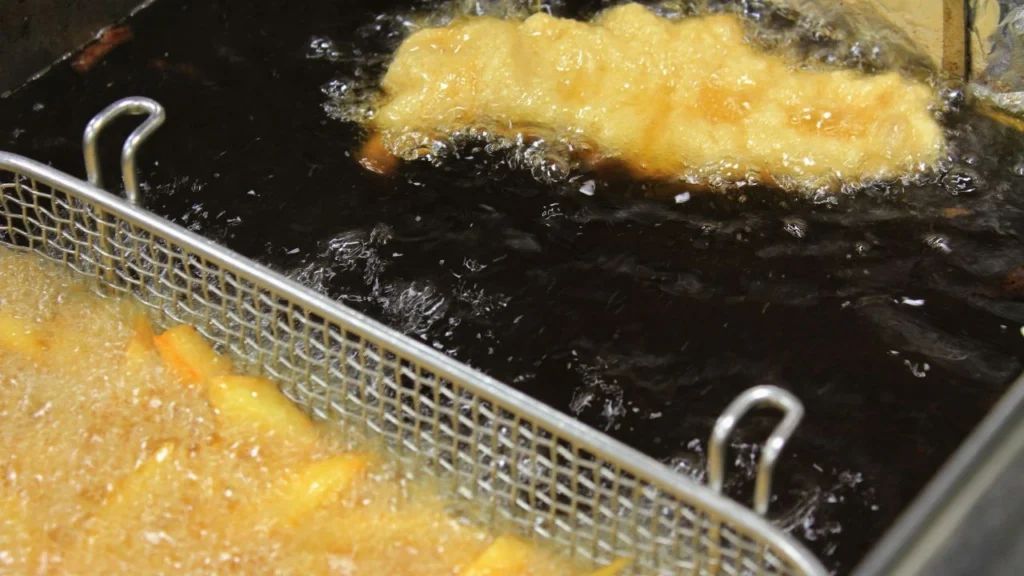
Assessing oil color changes is a straightforward task but vital. It’s as simple as looking closely. A noticeable Darkening of the Fry Oil hints at degradation in quality.
When you see the oil shifting from its original hue to a darker, amber-like shade, it might indicate that it’s time for replacement. Color checking supports consistency. Ensure frequent checks; they help greatly.
You may encounter difficulty discerning subtle shifts if not vigilant about monitoring these visual cues over each use – this could lead to inadvertently using compromised oil beyond its prime due to gradual change rather than sudden. It becomes less effective and can impact flavor adversely when too dark. Replace after significant change
- Detect Odd Odors Swiftly
When frying food, I’m always careful about the quality of my oil. A Sour Odor signals trouble right away. This odor can help to detect bad oil and at the same time prevent spoiled flavors in dishes.
Fresh fryer oil should have a neutral scent; if it doesn’t, it’s possibly no longer good for use. “Trust your nose,” experts insist. It won’t mislead you on this one! If while cooking there arises an acrid smell that wasn’t present when the bottle was first opened, then chances are high that oxidation has occurred due to exposure or age.
Before reaching conclusions though, remember different oils have distinct scents – not all pungent aromas mean spoilage. This sometimes causes confusion among users expecting uniformity across various types of oils used for frying foods. According to Hirschbein from Southern Living, olive oil exposed to too much light or heat can quickly lose its freshness and develop unpleasant odors akin to crayons or play dough, indicating rancidity caused by inadequate storage conditions.
Proper storage, such as avoiding direct sunlight and sealing the bottle carefully after each use, helps preserve the oil’s optimal flavor and prevents premature aging. Sniff smartly; act swiftly!
- Notice Increased Foam Formation
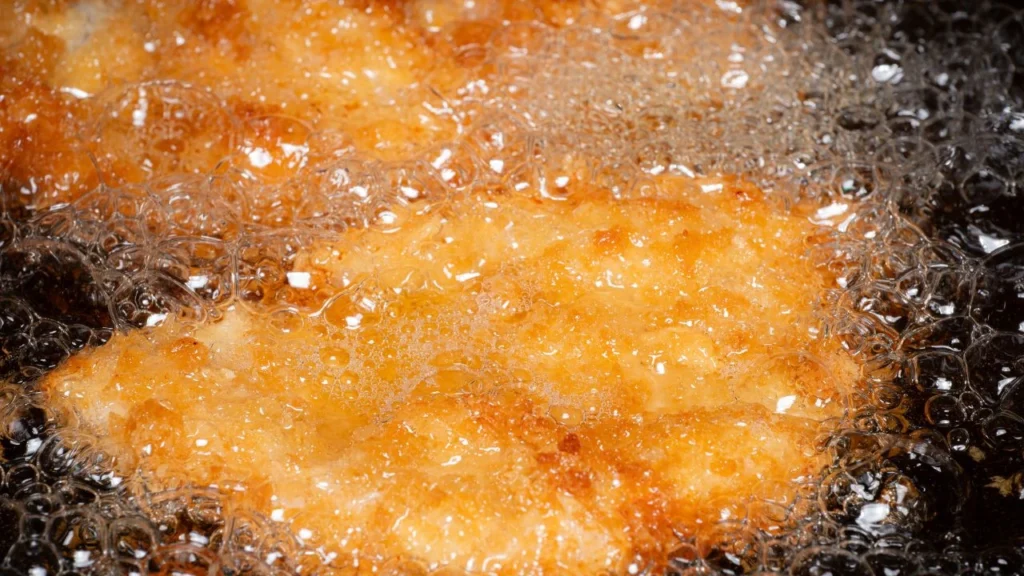
Keeping an eye out for foam is a clear signal the oil’s gone bad. It looks like thick froth. This phenomenon occurs, helping to indicate that it’s time to change the oil.
When you start seeing more bubbles than usual forming on your frying oil’s surface, take note. Foam rises fast now. It can ruin good food quickly.
In noticing increased foam formation in your fryer, you will be able to discern that something isn’t right with the life of your cooking medium. This tells us our once-clear liquid has degraded significantly from use and heat exposure over time. Most oils degrade after repeated heating cycles; however, specifics vary by type.
- Watch for Excessive Stickiness
As oil ages, it loses its slick quality and may become sticky. Sticky surfaces signal degradation. If foods start sticking unusually to the pan, even with ample oil, this stickiness indicates a breakdown in the frying medium’s efficacy; consider replacing your oil if this occurs often during cooking.
A membrane of overly viscous or tacky residue on fried items hints at an overdue change of fryer content due to increased viscosity as oils degrade over time beyond optimal use levels. The texture might be off now. Crispness could diminish quickly too.
Experts assert that fresh oil helps support excellent food release but highlight that poor maintenance can negate these benefits by ruining fryers prematurely – hurting both taste and operational efficiency alike. Though generally stable for months past expiration when stored correctly, always perform sensory checks before using opened oils regardless of dates indicated by manufacturers’ guidelines or “best-by” labels. Visual cues are vital indicators, especially when unsure about given timelines provided elsewhere without verification first-hand through personal experience and testing procedures.
- Inspect for Consistency Shifts
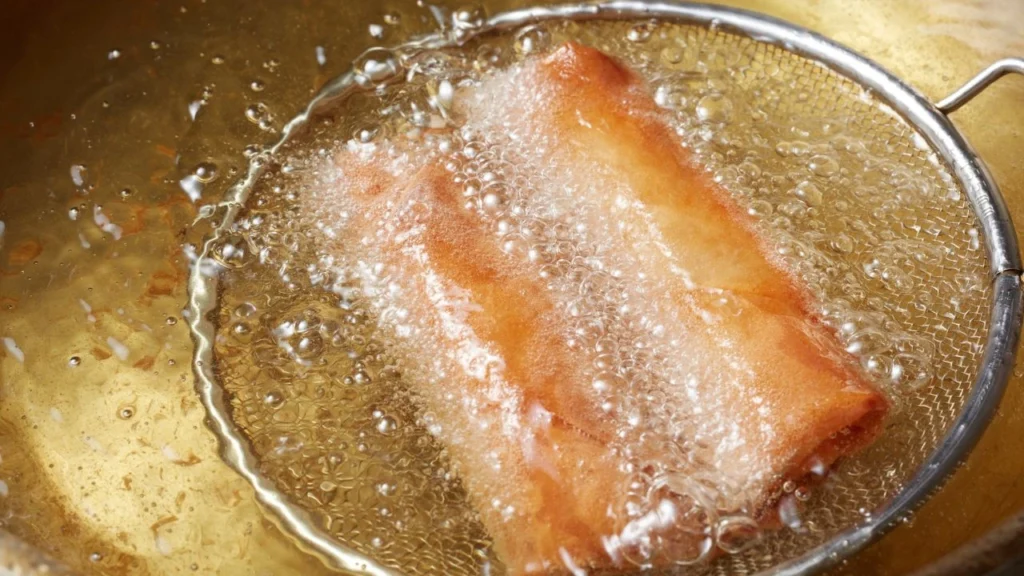
As the oil ages, its consistency changes significantly. Keep an eye out for these shifts. It’s really a telltale sign of degradation when thickness varies.
Good frying oil should have a certain viscosity that remains consistent throughout use. Consistency is easier to gauge visually and tactically than some might presume. It takes experience and attention to notice subtle differences in the texture of your fryer’s oil which may suggest deterioration.
Safeway Used Oil emphasizes that good fryer oil looks clear rather than soapy or murky as deterioration sets in. A key indicator often overlooked but easy to spot with proper vigilance. It’s simple: check regularly.
- Test with Food Droppings
When testing oil with food droppings, simple observations are key. The breaded chicken nugget I dropped sizzled instantly. It’s an interesting method and quite revealing.
Fresh oil should rapidly bubble around the immersed food without excess smoke or odor. Excess foam is bad news. A dark tint signals trouble ahead for my fries.
When frying items like doughnuts or fritters, old oil can cause them to absorb too much grease, affecting their crispiness and flavor. Using poor quality fat can ruin even your best recipes, leading to disappointing results. Oil must stay clear; Murkiness spells disaster.
It’s done its time.
- Beware of Strange Flavors
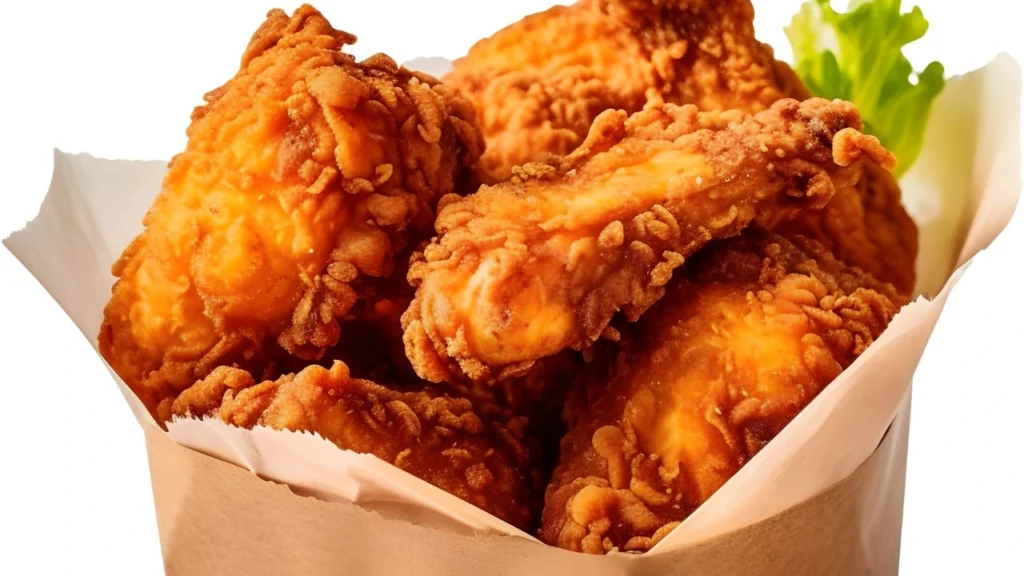
When frying foods, unusual flavors can signal that the oil’s quality has declined. These shifts in taste help to support it and are indicators aiding improvement efforts. Oil should have a clean and neutral flavor when fresh.
If any off-tastes or strange aftertastes persist, this usually means the oil is no longer good for use. Discard with Odd Flavors present. Don’t ignore these signals.
Whenever you encounter an unexpected bitterness or chemical-like taste in your food, consider that as a sign your fryer needs attention; if ignored, it could lead to larger problems down the line. According to culinary expert John Smithson at America’s Test Kitchen, “Pour some into a cup if rancid.”
Trust Your Palate always.
Manage Your Oil Lifespan
Keeping track of oil quality is vital for any kitchen, a task that can’t be overlooked. Knowing the subtle signs your frying oil has degraded ensures consistent food taste and safety. Frequent usage or exposure to high temperatures accelerates the decline in oil integrity; thus, close monitoring becomes necessary.
Being watchful helps avoid serving dishes with off-flavors caused by compromised cooking oils – an experience no guest should have. Regular assessments are key in this process. Maintaining optimal frying conditions involves not just assessing but also taking proactive steps; filtering the fryer’s contents daily plays a significant role here.
With proper filtration practices, you’re helping to keep unnecessary waste at bay while maintaining culinary standards high and costs low – it makes complete business sense indeed! To minimize degradation rates will require constant vigilance on multiple fronts including storage environments free from excessive light and heat sources. Oils with a high smoke point like peanut oil withstand higher temperatures.
Resources
https://www.zeroacre.com/blog/cooking-oil-smoke-points
https://farmselite.com/foam-in-the-oil-why-does-it-occur-in-frying/
https://safewayusedoil.com/2020/08/signs-your-restaurants-fryer-oil-needs-to-be-changed/


